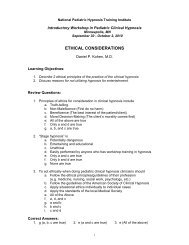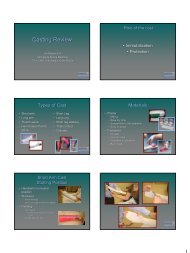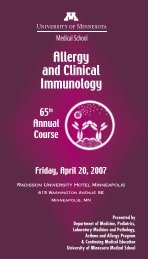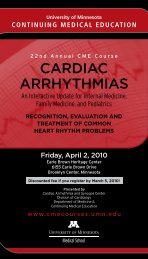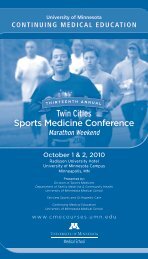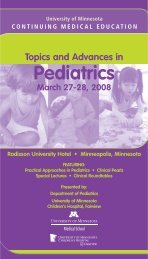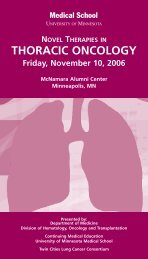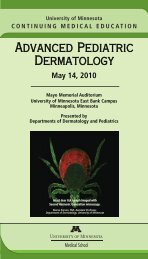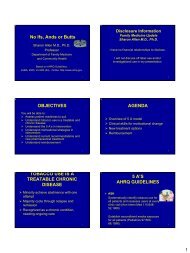Understanding & Discussing Women's Sexual Functioning: How to ...
Understanding & Discussing Women's Sexual Functioning: How to ...
Understanding & Discussing Women's Sexual Functioning: How to ...
You also want an ePaper? Increase the reach of your titles
YUMPU automatically turns print PDFs into web optimized ePapers that Google loves.
Female/Male <strong>Sexual</strong> Arousal<br />
Disorder (302.72)<br />
A. Persistent or recurrent inability <strong>to</strong> attain,<br />
or <strong>to</strong> maintain until completion of the<br />
sexual activity, an adequate lubrication-<br />
swelling response of sexual excitement<br />
B. The disturbance causes marked distress or<br />
interpersonal difficulty<br />
C. The orgasmic dysfunction is not better accounted for<br />
by another Axis I disorder (except another <strong>Sexual</strong><br />
Dysfunction) and is not due exclusively <strong>to</strong> the direct<br />
physiological effects of a substance (e.g., a drug of<br />
abuse, a medication) or a general medical condition<br />
Vaginismus (306.51)<br />
A. Recurrent or persistent involuntary<br />
spasm of the musculature of the outer<br />
third of the vagina that interferes with<br />
sexual intercourse<br />
B. The disturbance causes marked distress or<br />
interpersonal difficulty<br />
C. The disturbance is not better accounted for by<br />
another Axis I disorder (e.g., Somatization Disorder) and<br />
is not due exclusively <strong>to</strong> the direct physiological effects<br />
of a general medical condition<br />
Female Orgasmic Disorder (302.73)<br />
A. Persistent or recurrent delay in, or absence of,<br />
orgasm following a normal sexual excitement phase.<br />
Women exhibit wide variability in the type or intensity<br />
of stimulation that triggers orgasm. The diagnosis of<br />
Female Orgasmic Disorder should be based on the<br />
clinician’s s judgment that the woman’s s orgasmic<br />
capacity is less than would be reasonable for her age,<br />
sexual experience, and the adequacy of sexual<br />
stimulation she receives.<br />
B. The disturbance causes marked distress or interpersonal<br />
difficulty<br />
C. The orgasmic dysfunction is not better accounted for by<br />
another Axis I disorder (except another <strong>Sexual</strong> Dysfunction) and<br />
is not due exclusively <strong>to</strong> the direct physiological effects of a<br />
substance (e.g., a drug of abuse, a medication) or a general<br />
medical condition<br />
Fac<strong>to</strong>rs affecting sexual functioning<br />
Medical Conditions<br />
– Geni<strong>to</strong>urinary<br />
– Vascular<br />
– Neurological<br />
– Endocrine<br />
Medications<br />
– Psychotropic (e.g. SSRIs)<br />
– OCPs<br />
Psychosocial fac<strong>to</strong>rs<br />
– <strong>Sexual</strong> his<strong>to</strong>ry (eg(<br />
trauma)<br />
– Messages about sexuality<br />
– Dyadic stress<br />
– Body Image<br />
– Mental Health (eg(<br />
depression, anxiety, “stress”)<br />
Dyspareunia (302.76)<br />
A. Recurrent or persistent genital pain<br />
associated with sexual intercourse<br />
B. The disturbance causes marked distress or<br />
interpersonal difficulty<br />
C. The orgasmic dysfunction is not caused exclusively<br />
by Vaginismus or lack of lubrication, is not better<br />
accounted for by another Axis I disorder (except another<br />
<strong>Sexual</strong> Dysfunction) and is not due exclusively <strong>to</strong> the<br />
direct physiological effects of a substance (e.g., a drug of<br />
abuse, a medication) or a general medical condition<br />
Prevalence of Female <strong>Sexual</strong><br />
Dysfunctions<br />
For women (as opposed <strong>to</strong> men) Hypoactive <strong>Sexual</strong> Desire Disorder<br />
(HSDD) decreases with age<br />
Vaginismus<br />
– 1% prevalence<br />
Dyspareunia –<br />
– 18-72% (US)<br />
– Likelihood may increase post-menopause<br />
Orgasmic disorder<br />
– Kinsey (1953) 10% lifetime prevalence anorgasmia<br />
– Laumann et al (1999) 24% 1-yr 1<br />
prevalence of problems<br />
– Depending on definition: 4-24% 4<br />
– Lower SES and less education related <strong>to</strong> lower likelihood <strong>to</strong> experience<br />
orgasm. (Laumann(<br />
et al, 1994)<br />
<strong>Sexual</strong> Arousal disorder<br />
– Problems with lubrication:14-43% 43% US, (1-yr prevalence); 6% Iceland<br />
(lifetime prevalence); 8% Sweden (1-yr prevalence)…..<br />
– Increases with age for both men and women<br />
2



